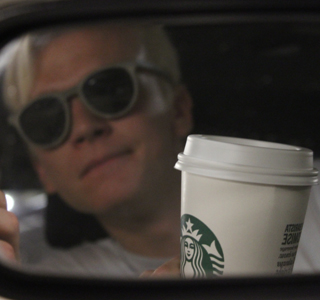Driving on the freeway at 8 a.m., sipping Starbucks coffee while struggling to put on sunglasses, is an everyday routine for many Angelenos, but as a foreigner I see it for what it really is: anarchy.
With no regard for traffic rules, like full-drawn lines, changing of lanes or turning to check blind spots, the possibility of imminent death always stalks me as I get behind the wheel in Los Angeles.
After living in this city for 10 months, I am still amazed, and terrified, by how many bad drivers Los Angeles harbors. Just the other day a truck cut in front of me on the 134 Ventura Freeway at the last second to exit off of Forest Lawn Drive. The driver did not even care to use the blinkers!
Luckily for me, I was not smashed into and I remain unscathed, apart from my psyche that is forever scarred from the near death experience. Who knows, maybe I could have been buried at the Forest Lawn Memorial Park, right next to Michael Jackson.
According to the California Highway Patrol, 2,995 people were killed and more than 220,000 were injured due to motor vehicle collisions in California in 2012. That same year, the number of traffic related deaths in Sweden were 296.
Granted, Sweden is much smaller, with 9 million inhabitants, than California and her 38 plus million. This obviously means fewer accidents in Sweden. Nevertheless what can Californians take away from the Swedes?
First, it should be hard to get a driver’s license.
To acquire a driver’s license in Sweden is similar to the United States. In both countries, drivers have to take a written test and pass a driving test, but it is much harder to pass in Sweden. Drivers must not only know how to drive safely, but for example, prove they know how to drive environmentally, keeping the car emissions to a minimum.
I had to retake the driving test three times to pass, which is not uncommon in my home country. In Sweden, there are stories about people who have failed the test more than 10 times.
From what I have heard it is much easier to pass the test in California, where drivers only have to prove they can drive around the neighborhood for 15 minutes.
If legislation is passed to make it harder for people to get a license, upcoming drivers will be safer and more cautious.
Secondly, alcohol was a factor leading to 1,066 fatalities in 2012 in California, and a person will not be charged with a DUI if his or her blood/alcohol level is under 0.08 percent, which measures to approximately two drinks.
The blood alcohol level depends on certain factors, like weight and body mass. Putting my manly pride aside, I will attest to the fact that two drinks is enough to cause havoc with my 165 pound, 21-year-old body’s motor skills.
In Sweden, the accepted blood alcohol level for getting behind the wheel is 0.02 percent, which is low enough to not affect motor skills or judgment.
Lowering the limit to something similar to the Swedish limit will lead people, in many cases, to refrain from even drinking before taking the car out.
Lastly, Los Angeles needs to improve the its metro and other commuting options.
It took me several months to realize that Los Angeles has a subway, and it seems that for many the stops are like leprechauns and their pots of gold: you question their existence.
Almost every major city throughout U.S., or the developed world for that matter, has a working metro system. Los Angeles, priding itself to be the entertainment capital of the world, frankly seems ancient in that aspect, polluting the environment and people’s spirits with miles of traffic every day.
Why take the car if there is a cheaper and quicker way to get to work?
There are a lot of things that continue to amaze me about the United States, but the way people drive is sadly not one of them, and I keep looking over my shoulder at every turn I make, no matter how big or small.


